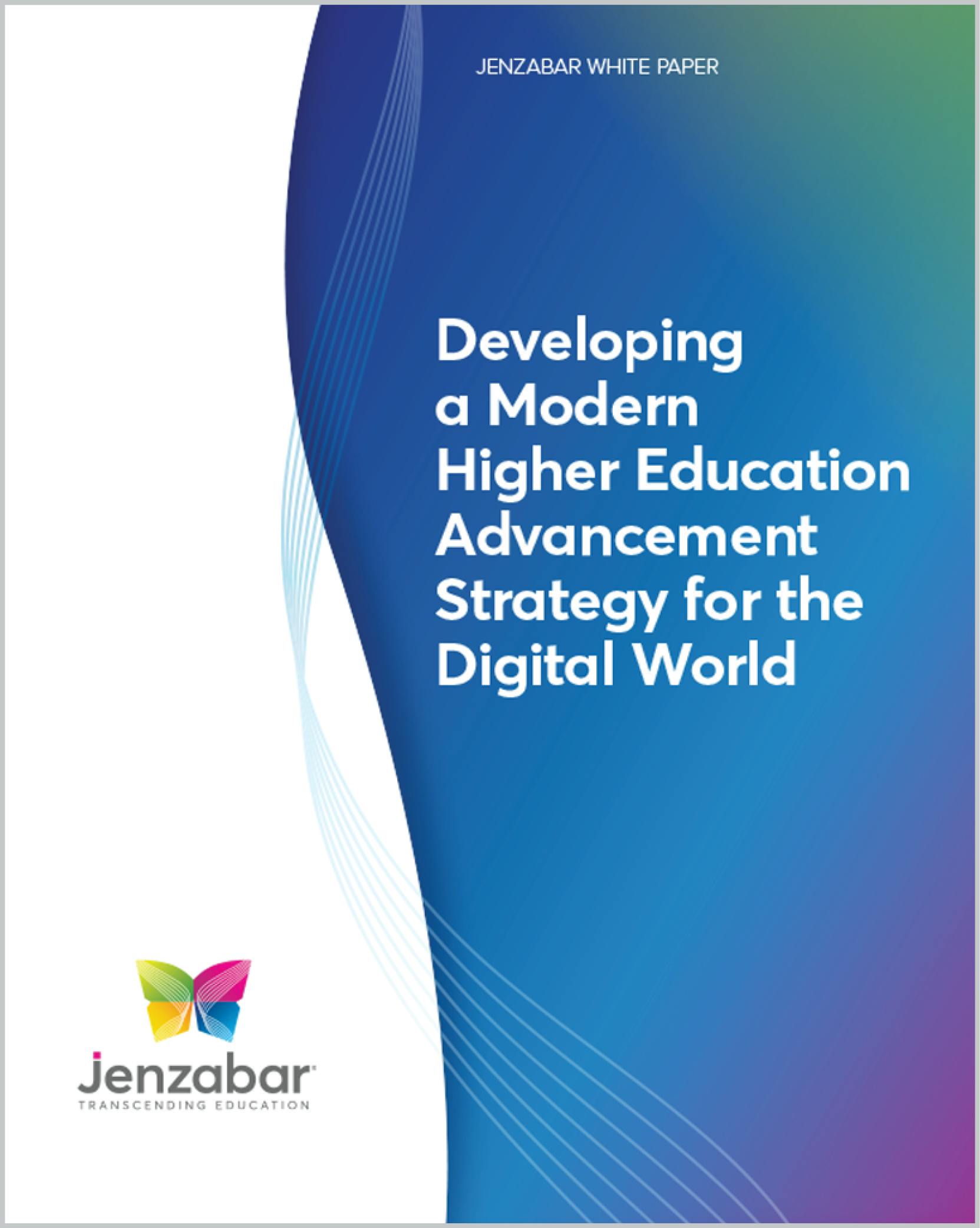
Digital Upgrade vs. Digital Transformation: What's the Difference?
A digital upgrade is not a digital transformation, but an important step in the journey.
Remote learning. Hybrid models. Electronic whiteboards. The pandemic has had a major impact on higher education institutions’ use and views of technology. But even before the pandemic started, colleges and universities were reviewing their use of technology. According to a recent Jenzabar and University Business poll, more than half the respondents said that their institutions were engaged in some form of digital transformation before the pandemic. But what does that mean?
The survey, which polled nearly 700 higher education leaders, also revealed that 97 percent of respondents said their institutions had begun some level of digital transformation after the pandemic started. And while it is interesting to see how the pandemic has been a catalyst for change in higher education, it’s important to note a few key points. For example, many people think digital upgrades are the same as digital transformation. The truth is that there is a big difference between the two types of projects. Let’s break down the two concepts and what institutions can do to move forward in today’s complex technology environment.
Digital Upgrades vs. Transformation
Digital transformation can’t be boiled down to simply upgrading legacy systems or replacing single-purpose solutions; it is a fundamental transition of how institutions do business. A digital transformation is meant to break down silos, change institutional culture, enhance operational workflows, replace legacy systems, and make institutions more responsive to student needs.
Conversely, digital upgrades patch existing systems or include the purchase of new platforms to meet current technology challenges. Examples of digital upgrades can include purchasing a whiteboard classroom tool to improve hybrid learning or upgrading a student information system (SIS) to improve insight into student needs across the institution. In general, digital upgrades free up staff time, reduce downtime for systems, and improve end-user experiences. A digital upgrade can also lead to reduced operations costs, a critical benefit as institutions find themselves with tighter budgets and fewer revenue-generating options. Notably, digital updates are significant but do not substantially alter the form and function of an institution. After implementing a digital upgrade, institutions may operate more efficiently, but the underlying business operations and processes remain similar. While there are some growing pains for institutional staff with any digital upgrade, it’s significantly less disruptive than digital transformation.
A digital transformation will dramatically and fundamentally change an institution and can impact every department and constituent across campus. For a comparable example, let’s think of healthcare and the rise of telehealth services during the pandemic, which fundamentally changed how healthcare technology was used. Academia is currently going through that type of transformation because COVID-19 has placed similar strains across the entire institution. Digital transformation requires viewing the entire institution through a holistic lens, factoring all variables, and finding a common technology platform for teaching, administration, financial aid, recruitment, fundraising, and more. When done well, a digital transformation will provide stakeholders with a single source of truth, but it also requires all those stakeholders to buy into a new strategic vision about how technology will drive the institution forward.
How to Move Forward
Undoubtedly, there are a lot of variables and obstacles to either approach. Among the top concerns is what an organization afford to do. Colleges and universities need to commit infrastructure and personnel resources for digital transformations. Having a clear budget and understanding of outcomes can simplify the decision-making process. Additionally, institutions must weigh their current needs against their long-term vision. This requires schools to review their long-term institutional planning to understand how digital transformation may help with viability.
Additionally, campus leaders must be aligned on the immediate task at hand. If institutions want to experience a positive impact from their digital transformation, department and administrative leaders must be aware of what is needed of their teams and how to best communicate any changes to those involved.
If the concept of digital transformation seems like a big task and institutions are unsure if they have the in-house subject matter expertise, they should look for an experienced partner that can provide guidance and support. The right partnerships can eliminate a lot of wasted time, money, and effort. Institutions just need to make sure their partner has a proven track record and significant expertise in the higher education industry.
In some cases, institutions are trying to manage the transition from a pre-pandemic time to a post-pandemic reality by upgrading and patching legacy systems. But other schools realize putting a bandage on current woes will not be enough for long-term, post-pandemic survival. Those schools are looking into digital transformation to ensure resiliency.
It’s important to keep in mind that digital transformation is a journey, not a destination. While the entire institution may benefit from a digital transformation, it’s often best to start in one area, identify progress and best practices, and then expand across campus. This strategy requires planning from the CIO and getting buy-in from all stakeholders. Like any proactive endeavor that leads to future gains, digital transformation is more about helping people understand and learn new technology than it is about deploying the technology itself. Building and executing a digital strategy in education requires a high degree of stakeholder engagement, clarity of vision, and the ability to make timely decisions.
Don't Look Back
The pandemic increased the need for higher education institutions to make changes to their technology footprint. Colleges and universities were forced to cope with new realities by moving large amounts of IT infrastructure to the cloud. But that digital upgrade might only be the start of a larger, more impactful digital transformation journey. True digital transformation is disruptive, ushering in the adoption of new tools, cultural changes, alterations in business practices, and more. Institutions should move forward and pursue innovation through transformation to better ensure their long-term success.
Other Resources





